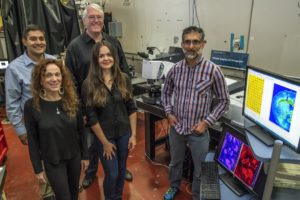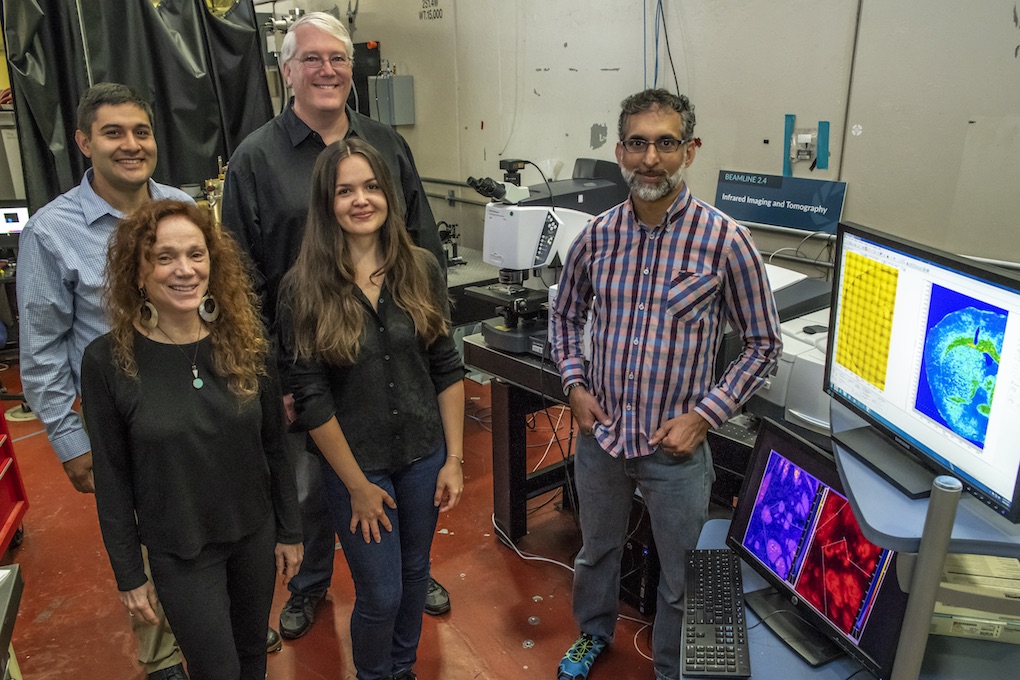
From left: Edward Barnard (Molecular Foundry), Cynthia McMurray (MBIB), Michael Martin (ALS), Lila Lovergne (MBIB), and Aris Polyzos (MBIB) performing “spectral phenotyping” at ALS Beamline 2.4.
Biosciences’ Cynthia McMurray and Mike Martin of the Advanced Light Source (ALS) are spearheading an effort to develop a noninvasive, label-free technique to probe living cells in their native environments to aid in biological and medical research. By shining highly focused infrared light—which doesn’t damage or otherwise alter the cells—they hope to be able to distinguish features within cells and identify individual cell types by their unique spectral signatures. McMurray, a senior scientist in Molecular Biophysics and Integrated Bioimaging (MBIB), and Martin, photon science operations group lead at the ALS, received a round of seed money earlier this year to support their effort, dubbed “spectral phenotyping.” An Aug. 8 news article in the journal Science highlighted their work and that of the larger Human Cell Atlas project that aims to provide “a unique ID card for each cell type,” as well as a 3D map of how cells form tissues, and new insights into disease.
Read more in the News Center.




